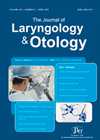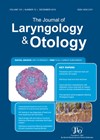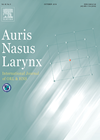
Journal Reviews
A comparison between trainee and trainer outcomes in mastoid surgery
In this era where training faces restrictions due to theatre time, fewer sessions available to trainees and requirements of consultant-led and consultant-delivered services, one unit confirmed that myringoplasties given to trainees reduced from 34.2% to 16%. This study compares outcomes...
Is canal wall down with obliteration a useful compromise between canal wall up procedure and open mastoid cavities?
Controversy has raged for many years between open mastoid cavity procedures and canal wall up techniques in terms of postoperative recidivism and ear discharge. It is generally believed that canal wall up procedures can miss hidden cholesteatoma but preserve useful...
Robot controlled mastoid surgery!
This is a fascinating piece of work by a Korean team developing a human-robot collaborative control. Their model uses image guidance surgery to locate the drill tip’s position. Important structures can be highlighted – in this case the facial nerve....








